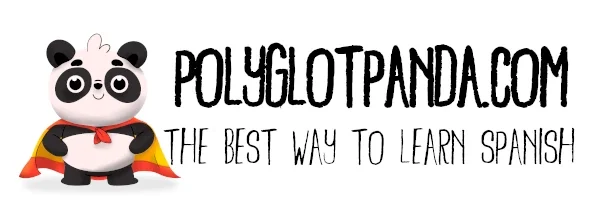How to learn vocabulary words fast and effectively
You wish to know how you can learn tons of vocabulary fast and effectively… ¡Then keep reading!
Contents
There are million methods out there to learn vocabulary and I’m quite proud to say that I have tried most of them (it’s been like seven years that I started my adventure to become a polyglot) and I can assure you this is the one that have given me the best results by far.
The Spaced Repetition System
The method that I’m gonna teach you in this post is based on Spaced Repetition. Spaced repetition is a learning technique based on the idea that learning is greater when studying is spread out over time, as opposed to studying the same amount of content in a single session. That’s what we call Spacing Effect.
The American Psychologist Pierce J. Howard talks about the spacing effect on his book “The owner’s manual for the brain”. He states that “Work involving higher mental functions, such as analysis and synthesis, needs to be spaced out to allow new neural connections to solidify. New learning drives out old learning when insufficient time intervenes.”
What is Spaced Repetition
But this is not new information at all. Psychologists have been studying memory for almost 150 years and the Spacing Effect was one of the first big discoveries. German psychologist and philosopher Herman Ebbinghaus was the first one to use repetition as a measure of memory, and he experimented memorizing nonsense syllables formed by a consonant, a vowel and a consonant. Things like CAC, BUR, GIS, and stuff like that. In 1885 doctor Ebbinghaus published what is considered the cornerstone of the study of memory: the forgetting curve, which describes how memory decreases over time. Also he discovered that by spacing the memorization of the syllables, he needed fewer repetitions in order to remember them.
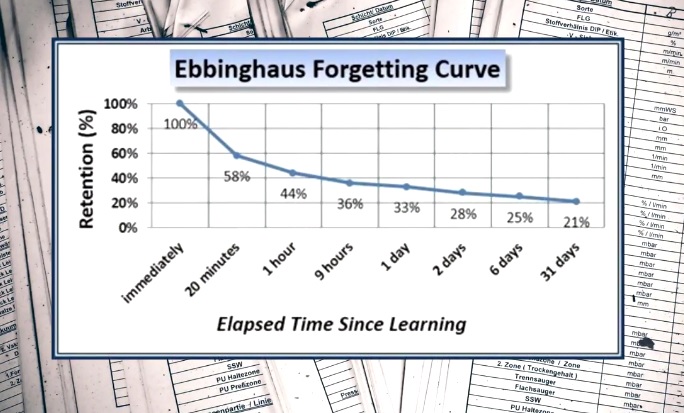
For example, it took him 68 repetition on one day and then 7 repetition the next day to memorize one list of twelve syllables. But, by spacing out the memorization with just one more day, he found he could achieve the same memorization in only 38 repetitions. So, with less effort and less studying, he was able to memorize the same exact amount of information. And that was just the beginning of a whole branch of psychology dedicated to understand how learning worked. Since then, thousands of studies have been made proving over and over that spaced repetition is the key for learning processes.
How spaced repetition works
But, maybe you’re wondering why something as simple as spacing out our learning is so powerful. Well, the truth that maybe shock you is that one of the most important things for learning is… forgetting. Yes, forgetting! Because the more we forget something, the harder is gonna be to retrieve it. And the harder to retrieve it, the greater the increase in learning will be. Does that make sense to you?
Let me go deeper with this. The American journalist Benedict Carey explained the benefits of forgetting in his book “How we learn” and developed what he called the “Forget to Learn” theory. According to this theory, memory have two main departments: storage and retrieval. Storage does not fade over time. Retrieval does fade. So this means that any piece of information that enters to your brain is gonna be stored forever. The reason why you can’t remember it is because the ability to access that piece of memory, that is, the retrieval, is not longer there, so you have to work to mantaint it.
Think of this as if your brain was a library. When you put a new book on a shelf, that book will stay there forever. But if you forget WHERE it is, then you won’t find it and you will never access to that book. But if, for example, you draw a yellow line on the floor that goes to that specific book, then it will be easy to find it and retrieve it. In this metaphor, memorization and repetition is that yellow line on the floor. Does that make sense?
The Forget to Learn Theory
Now, Mr. Carey went a little bit further in his book and explained the importance of forgetting in learning. According to this author:
«Some ‘breakdown’ must occur for us to strengthen learning when we revisit the material. Without a little forgetting, you get no benefit from further study. It is what allows learning to build, like an exercised muscle.”
So let’s come back to the library metaphor. The more time you ignore the yellow line on the floor, the more is gonna damage (because it’s not used and what’s not used gets damaged with time). So coming back to that line from time to time and drawing a new line over the old one, will make it more durable. The more you do this, the thicker is gonna be the line and the more resistant will be.
The perfect Spaced Repetition intervals
But, careful, there are some rules in spaced repetition if you want it to work. You just can’t learn something and try to retrieve it one year later. Polish researcher Piotr Wozniak, was the first one to study this matter and created the first software able to determine the perfect intervals for learning. This software was called SuperMemo and this is what if found. After learning any piece of information, the first repetition must be made the day after. The second one should be made one week after. The third one after 16 days and the fourth one after 35 days.
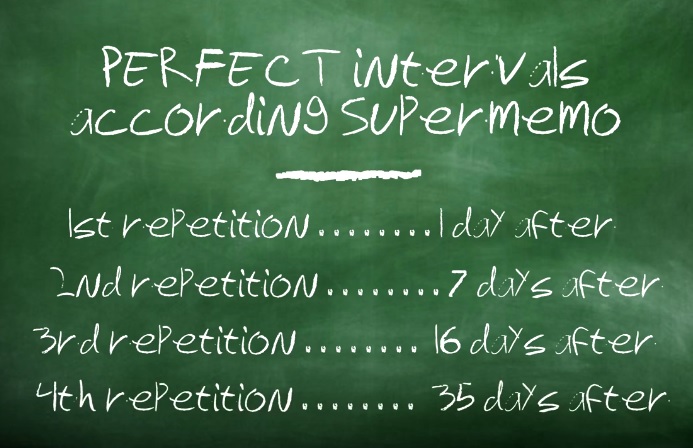
Before you start rescheduling your whole system of learning, you have to know that this was 1987. Since then many other studies have been made and those intervals have change over the time depending on many factors like the amount of information to memorize or how far away the final test for that information is. But is good for you to know that those are the intervals that you should have in mind when scheduling your learning.
How to do spaced repetition with flashcards
With all this in mind is time to show you how to apply it to learn vocabulary in a fast easy way. And for that I’m gonna show the Leitner System, a technique proposed by the German science journalist Sebastian Leitner. Here’s how it works.
The first step is to decide the number of departments you want to use to hold the flashcards on them. Those departments can be tiny boxes, envelopes, or any other object that can hold flashcards.
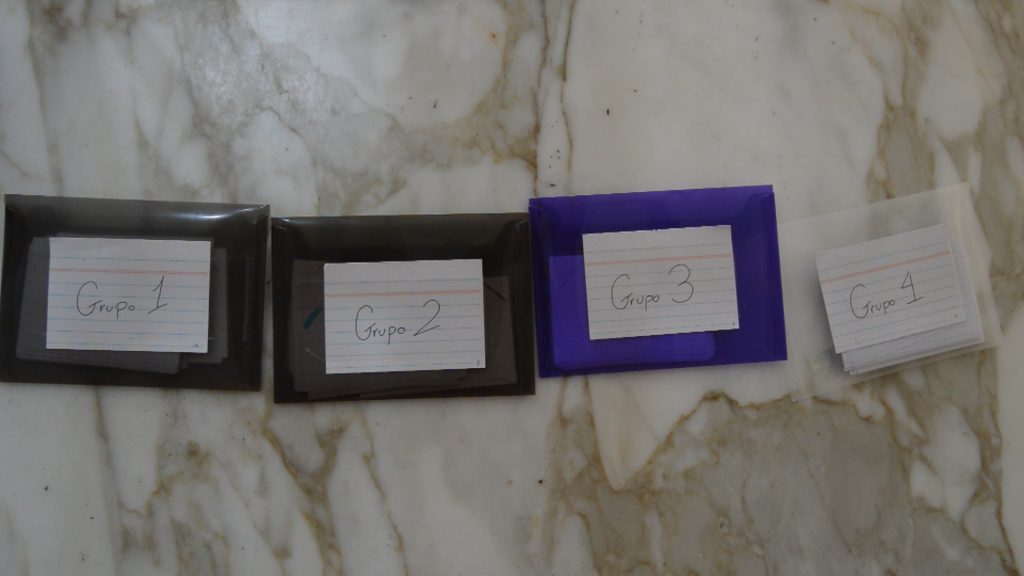
In my case I use this tiny plastic envelopes that I bought on a local store and I named them Group 1, Group 2, Group 3 and Group 4. These envelopes are perfect for me because they make it very portable, so I can play with my vocabulary at any time in any place, even if I’m traveling.
Once you have them, each department is gonna represent a different study time interval.
- Group 1 might be studying every day
- Flashcards on Group 2 might be studied every 2 days
- The ones on Group 3 might be studied every 4 days
- And Group 4 might be studied once a week
When you study your flashcards, every time you get a flashcard right it’s gonna graduate to the next group. But if you get a flashcard wrong is gonna go all the way to group 1 no matter where it was.
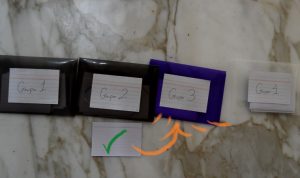
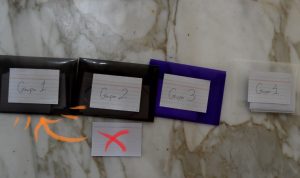
The Spaced Repetition Calendar
If you didn’t really get this, let me put it in a different way. If we take a calendar, we know we have to study the flashcards on Group 1 every single day of the month. Then we will study the ones in Group 2 every two days. Flashcards on Group 3 will be reviewed every four days and Group 4 will only be checked once a week, let’s say, every Friday. So we just created a very visual way to know that on the day number 6 we have to study only the flashcards on group one and the day number 15 we have to study all four Groups.

Remember you can add as many departments as you wish and play with different time intervals to make it more challenging.
Spaced Repetition for language learning
By using the Leitner System you make sure you spend more time studying the flashcards that need the most attention and less time with those that are easy to remember. But now comes the question. What do I write on the flashcards. Well, I’m gonna tell you exactly what I do. I just write the words I’m trying to learn in Spanish on one side and draw a little blue mark somewhere on that side. Then, I write the translation to the language I’m trying to memorize on the other. The blue mark helps me to make sure I’m always facing the Spanish side. This way I won’t see the other side even if a flashcard has turned over by mistake.
For words that need some context, you can write some of it on the native side. For example, let’s say you are learning Spanish and want to memorize the word strong. You can have one flashcard for strong in the context of powerful and another one for strong in the context of language. Just write a sentence giving the word a context and write the corresponding translation on the other side.
And I do not only use this system for plain vocabulary. I use it for expressions and slang too. For example, memorizing «cover someone’s back» and «cubrir las espaldas a alguien«. Or if you want to learn the many ways there are to say a same word in Spanish with the different accents of Latinoamerica. The possibilities are unlimited. The more you play with them, the better you are going to remember them.
Well, this is how we reach the end of this post. I hope you’ve find it helpful.
See you soon and take care. Ciao Pandas.
